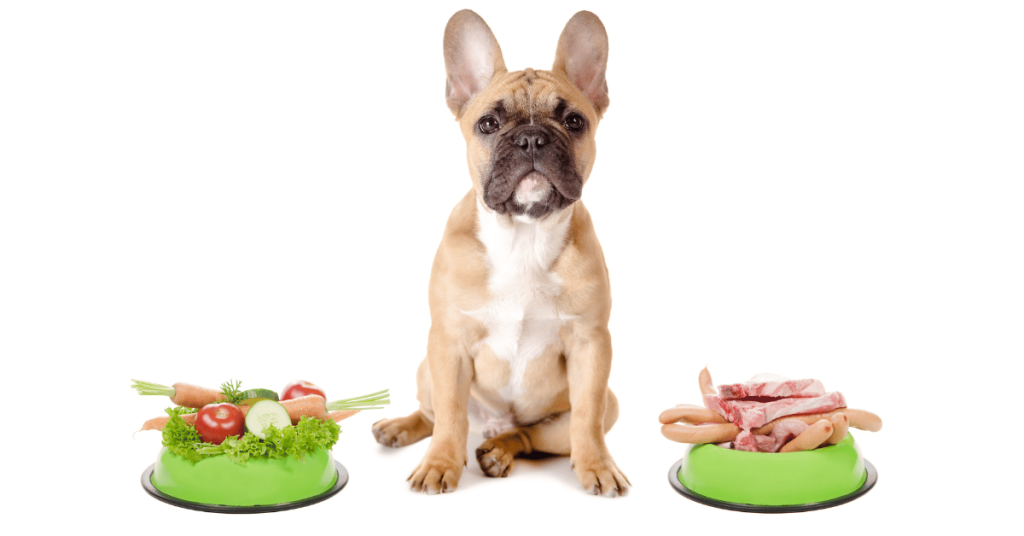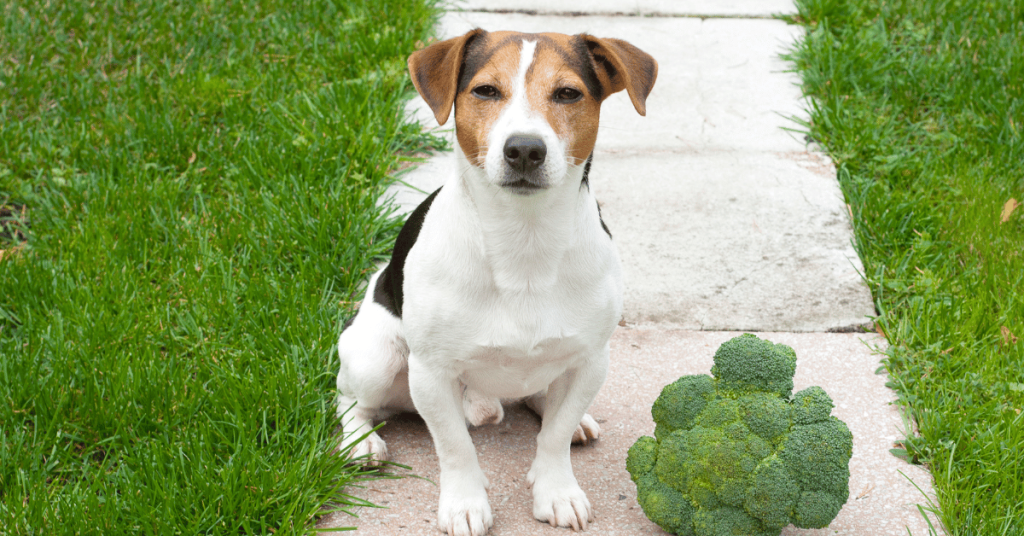Dogs are known to be omnivores, which means that they can consume both meat and plant-based foods, so it makes sense there must be some safe fruit and vegetables for dogs, right? Yes, and although fruits and vegetables are not a completely necessary part of their diet, (though starches are!) they can be a healthy addition to their meals or given as a treat. Not all fruits and vegetables are safe for dogs to eat, so it’s good to get informed about that.
In this article I’m going to ‘dig in’ to what diet is optimal for dogs, why fruit and veg are useful to add to your canine's cuisine, examples of fruit that dogs can safely eat, as well as veggies they can eat.
I’ll also get into fruit and veg your dog shouldn’t eat, either because it’s toxic or because it has other bad consequences, and you’ll learn how to safely introduce fruit and veggies to your dog’s diet.
It is important for dog owners to be aware of which fruits and vegetables are safe for their pets to consume, we tend to think ‘dogs eat everything’ but some fruit and veg can cause digestive issues, while others can be poisonous or even fatal to dogs.
For example, grapes and raisins can cause kidney failure in dogs, and onions and garlic can damage their red blood cells.
Fortunately, there are many fruits and vegetables that are safe and healthy for dogs to eat. These include carrots, green beans, bananas, apples, blueberries, and watermelon, among others. Adding these foods to a dog's diet can provide them with important vitamins, minerals, and fiber that can support their overall health and well-being.

Understanding Dogs' Dietary Needs
Dogs are omnivores and their diet should be nutritionally balanced, providing them with all their essential nutrients; proteins, carbohydrates, fats, vitamins, and minerals. Proteins are particularly critical as they help build and repair the body's tissues, while carbohydrates provide energy and dietary starch. Fats are also essential as they help absorb certain vitamins and provide high calorie energy, plus they’re generally tasty!
It’s debatable whether fruits and veg is necessary for a dog's diet, but they do provide additional nutrients and fiber, and dogs need fiber/starches in their diet. Some fruits and veggies aren’t safe for dogs to eat, and some can be toxic and cause health problems.
It is important to note that a dog's dietary needs may vary depending on their age, size, and activity level. Puppies and young dogs require more calories and nutrients to support their growth and development. Older dogs are tricky, they may need fewer calories to maintain a healthy weight, but a higher protein amount to keep muscle mass.
Owners should consult with a qualified canine nutritionist or dog dietician to determine their dog's specific dietary needs and ensure they are providing a balanced and healthy diet. In addition, owners should always monitor their dog's weight and adjust their diet as necessary to maintain a healthy weight.

Why Should You Feed Safe Fruit and Vegetables to Dogs?
Fruits and vegetables are not only beneficial for humans but also for dogs. Including fruits and vegetables in a dog's diet can provide them with essential vitamins, minerals, and antioxidants that help maintain their overall health and well-being.
Here are some of the benefits of feeding safe fruit and vegetables to dogs:
1. Provides Essential Nutrients
Fruits and vegetables are rich in essential nutrients that dogs need to maintain good health. For instance, carrots are loaded with vitamin A, which is vital for maintaining good vision, while sweet potatoes are rich in dietary fiber, which aids digestion.
2. Helps in Weight Management
Obesity is a significant health concern for dogs, and feeding them fruits and vegetables can help them maintain a healthy weight. Vegetables like green beans are low in calories but high in fiber, which helps dogs feel full and satisfied.
3. Promotes Good Dental Health
Chomping on fruits and vegetables can help clean a dog's teeth and freshen their breath. Apples, for example, contain malic acid, which helps remove plaque and tartar from teeth, just make sure you remove the seeds or pips as eaten in large quantities they’re toxic for dogs.
4. Boosts Immune System
Rich in antioxidants, fruits and vegetables help to boost a dog's immune system. Antioxidants protect cells from damage caused by free radicals, which can lead to various health problems, and premature ageing in dogs.
5. Reduces the Risk of Chronic Diseases
Feeding dogs a diet rich in fruits and vegetables can reduce the risk of chronic diseases like cancer, heart disease, and diabetes. Fruits and vegetables contain phytonutrients that have anti-inflammatory properties and can help prevent the development of chronic diseases.
In general, adding fruits and vegetables to a dog's diet can provide numerous health benefits, as well as mental enrichment, variety is the spice of life after all! If your dog is not a lover of eating them in their food, you can get supplements and supergreen powders which can also help.
6. Helps with hyration
Fruit and vegetables have a high water content, and are a great source of hydration for your dog. If your dog isn't much of a water drinker, it's worth adding some fruit and vegetables to their diet.
You can also get dog drinking foundations if you feel they're not drinking enough, check out our article on the best dog water fountains.

Safe Fruits for Dogs
Giving safe fruit or vegetables to dogs as a treat or snack is a nice way to stimulate their senses in an easy way, as well as provide a source of vitamins, boost brainpower and help keep them regular!
Fresh dog foods often include fruits and vegetables as well. However, not all fruits and vegetables are safe for dogs to eat. Let’s get into safe fruits for dogs.
Apples
Apples are a great source of vitamins A and C, and fiber. They are also low in protein and fat, making them a healthy snack for dogs. However, it is important to remove the seeds and core before giving them to your dog. Apple seeds contain cyanide, which can be toxic to dogs in large quantities (your dog would need to eat a LOT of them though, so try not to fret if some get past your quality control in the kitchen!). Cut the apple into small pieces if you’re concerned it might be a choking hazard.
Bananas
Bananas are another safe fruit for dogs. They are a great source of potassium, fiber, and vitamins B6 and C. Bananas are also low in sodium and cholesterol. Worth bearing in mind that bananas are high in sugar, so they should be given as an occasional treat and not as a regular part of your dog's diet. Sadly, dogs do not have hands, so many sure you peel them before giving them to your dog.
Blueberries
Blueberries are a great source of antioxidants, fiber, and vitamins C and K. They are also low in calories. Blueberries can be given to dogs as a treat, but they should be given in moderation. Too many blueberries can cause an upset stomach or diarrhea in dogs.
Cantaloupe Melons
Cantaloupes are a great source of vitamins A and C, potassium, and fiber. They are low in calories and fat, making them a healthy snack for dogs. However, it is important to remove the seeds and rind before giving them to your dog. The rind can be difficult for dogs to digest, and the seeds can cause intestinal blockages.
Overall, these fruits are safe for dogs to eat in moderation. It’s important to always supervise your dog when giving them any new food, including fruits and vegetables, and keep a mental diary of what you’ve fed in case you notice any adverse reactions.

Safe Vegetables for Dogs
When it comes to feeding vegetables to dogs, there are a few things to keep in mind. First, not all vegetables are safe for dogs to eat. Second, dogs have different nutritional needs than humans, so not all vegetables that are healthy for humans are healthy for dogs. Finally, it's important to prepare vegetables in a way that is safe and easy for dogs to eat. Here are some safe vegetables for dogs:
Carrots
Carrots are a great source of vitamins and minerals, including vitamin A, potassium, and fiber. They are also low in calories, making them a great snack for dogs who are watching their weight. Carrots can be served raw or cooked, but it's important to cut them into small pieces to prevent choking. Many dogs particular teething puppies, enjoy frozen carrots as a treat, I cut them lengthways before freezing.
Cucumbers
Cucumbers are another safe vegetable for dogs. They are low in calories and high in water content, which makes them a great snack for dogs who need to stay hydrated. Cut them into small pieces or puree them and freeze into pupsicles or add to stuffed Kongs to make a refreshing summer treat.
Green Beans
Green beans are a healthy vegetable for dogs. They are low in calories and high in fiber, which can help with digestion. Green beans can be served raw or cooked, and many dogs also enjoy frozen green beans as a treat. I tend to buy them already frozen, much cheaper too.
Sweet Potatoes
Sweet potatoes are a nutritious vegetable for dogs, which are a firm fave in my house, for dogs and humans alike. They are high in fiber, vitamins, and minerals, including vitamin A and potassium. Sweet potatoes can be served mashed, cut into small pieces or pureed to make a tasty treat.
I also use sweet potato as a nice glue for Kong stuffing, or as a tummy settler when fed with white fish. Learn more about sweet potatoes on The Possible Canine website.
In summary, there are many safe vegetables for dogs to eat. Carrots, cucumbers, green beans, and sweet potatoes are just a few examples. When feeding veggies to your dog, it's important to choose ones that are safe and healthy, and to prepare them in a way that is easy for your dog to eat. Check out our article on the best puppy kong toys, using enrichmeent feeders can help to raise the value of dog safe fruits or veggies, and give your dog a brilliant outlet for all of that chewing.

Potentially Harmful Fruit and Vegetables
Now you’ve read through my safe fruit and veg suggestions, here are the ones you want to avoid. Many fruits and vegetables that we love to eat are actually harmful or even toxic to dogs. It is important to be aware of these foods to keep your pet safe, some might seem obvious while others are a bit of a surprise.
Grapes and Raisins
Grapes, raisins sultans and currants are toxic to dogs and can cause kidney failure. We’re not 100% sure of the chemical which causes this but een a small amount of grapes or raisins can be harmful to your dog, so it is best to avoid feeding them altogether. Symptoms of grape or raisin toxicity include vomiting, diarrhea, and lethargy.
Avocados
Avocados contain persin, a substance that can be toxic to dogs in large amounts. While the flesh of the avo is generally safe for dogs to eat, the pit, skin, and leaves contain higher levels of persin and should be avoided. Symptoms of avocado toxicity in dogs include vomiting, diarrhea, and difficulty breathing.
Onions
Onions contain compounds that can damage a dog's red blood cells, leading to anemia. This can occur even if the onions are cooked or in powdered form. Symptoms of onion toxicity in dogs include vomiting, diarrhea, and lethargy.
If you suspect your dog has ingested any of these foods, it is important to seek veterinary care immediately. Better safe than sorry!
How to Safely Introduce Fruits and Vegetables
Introducing new foods to your dog's diet can be exciting, but it's important to do so safely. Here are some tips to help you safely introduce fruits and vegetables to your dog's diet:
Start Slow
When introducing new foods to your dog, it's important to start slow. Begin by giving them a small amount of just one new food at a time and monitor them for any adverse reactions. If they tolerate the new food well, you can gradually increase the amount over time.
Choose Dog-Safe Fruits and Vegetables
As you now know, not all fruits and vegetables are safe for dogs to eat, and some can be toxic and cause serious health problems. Make sure you choose fruits and vegetables that are safe for dogs to eat, and if in doubt check The American Kennel Club, as they have a list of fruits and vegetables that are safe for dogs to eat, including apples, bananas, blueberries, carrots, and green beans.
Prepare Them Properly
Before giving your dog any fruits or vegetables, make sure to prepare them properly, including washing them well. Remove any seeds, pits, or cores, and cut them into small, bite-sized pieces. Cook vegetables to make them easier to digest, and avoid adding any seasoning or spices.
Monitor Your Dog's Health
After introducing new foods to your dog's diet, it's important to monitor their health. Watch for any signs of tummy upset, such as vomiting or diarrhea. If your dog shows any signs of illness, stop giving them the new food and consult with your veterinarian.
By following these tips, you can safely introduce new fruits and vegetables to your dog's diet and provide them with a healthy and balanced diet.

What fruits and vegetables can dogs eat?
Dogs can safely eat a variety of fruits and vegetables, including blueberries, green beans, raspberries, and more. It is important to introduce new foods gradually and in moderation to ensure your dog's digestive system can handle them.
Are blueberries good for dogs?
Yes, blueberries are a healthy treat for dogs. They are packed with antioxidants and can provide various health benefits. Just make sure you wash them well, remove the stems and serve them in moderation.
Can dogs eat green beans?
Absolutely! Green beans are safe for dogs and can be a nutritious addition to their diet. They are low in calories and high in fiber, making them a great snack for dogs.
Can dogs eat raspberries?
Yes, dogs can eat raspberries. These berries are rich in antioxidants and can be a healthy treat for your dog. However, like other fruits, they should be given in moderation.
Can dogs eat fruits and vegetables instead of dog food?
While fruits and vegetables can be a healthy addition to your dog's diet, they shouldn’t replace their regular nutritionally balanced dog food. Fruit and veg should be given as treats or supplements, and the majority of your dog's diet should still consist of a complete and balanced dog food.
What fruits can dogs eat?
Dogs can safely eat a variety of fruits, including blueberries, strawberries, oranges, and apples. However, it is important to remember that these should be given in moderation and without any seeds or pits.
Can dogs eat oranges?
Yes, dogs can eat oranges, though many are put off by citrus flavor in general. Oranges are a great source of vitamin C and can be a healthy addition to your dog's diet. Just make sure to remove any seeds and serve them in moderation.
Can dogs eat strawberries?
Yes, dogs can safely eat strawberries. Strawberries are a good source of essential nutrients and can be a tasty and healthy treat for your dog. However, as with other fruits whihc are high in sugar, they should be given in moderation.
What vegetables can dogs eat?
Dogs can eat a variety of vegetables, including broccoli, green beans, carrots, and more. These vegetables can be a healthy and low-calorie addition to your dog's diet. However, it is important to avoid feeding them onions, tomatoes and other toxic vegetables.
Are raspberries safe for dogs?
Yes, raspberries are safe for dogs to eat. They can be a healthy and tasty treat for your furry friend. Just make sure to give them to your dog in moderation and remove any leaves or stems.
Fresh drinking water should always be provided for your dog, you can learn more in my article how much water should I give my puppy. You can also add vegetables to many enrichment feeders, learn how in our article about puzzle toys for dogs, and what to put in a Kong.

